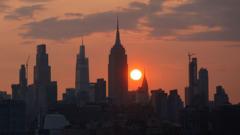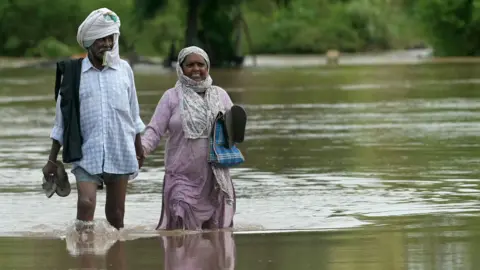An air quality health advisory has been activated for New York City and its neighboring areas due to smoke from Canadian wildfires. On Saturday, the New York Department of Environmental Conservation (DEC) and the Department of Health (DOH) announced the advisory, primarily affecting Long Island, the New York City metro area, Lower Hudson Valley, Upper Hudson Valley, and the Adirondack region. Officials emphasis that air quality levels in these regions are "unhealthy for sensitive groups," including children, the elderly, and individuals with pre-existing health conditions.
The Canadian wildfires have necessitated the evacuation of tens of thousands of residents, with the resulting smoke raising air quality concerns across the northern United States. The air quality index (AQI) is expected to exceed 100 in large portions of New York state, with predictions suggesting it could peak at 135. Furthermore, parts of New England are also under air quality alerts. The AQI serves to rank the level of air pollution, where a higher score signifies increased health risks for the public.
Notably, earlier this month, similar air quality concerns prompted alerts in Chicago, with specific precautions recommended for vulnerable populations. Meanwhile, political ramifications stemming from the smoky skies have reached Washington, where six members of Congress contacted the Canadian ambassador expressing their dissatisfaction with the situation disrupting American summer activities.
Currently, over 550 wildfires are actively burning across Canada, particularly in Manitoba, resulting in approximately 6.1 million hectares (15 million acres) of land being scorched over the past year. The months of May and June proved especially catastrophic, displacing around 30,000 individuals in Saskatchewan and Manitoba, where state emergencies were declared.
Research has continually linked the increasing frequency of wildfire seasons to climate change, with Canada warming at a rate that is reported to be double the global average, and its Arctic regions, alarmingly, experiencing a temperature rise nearly triple the average pace.


















